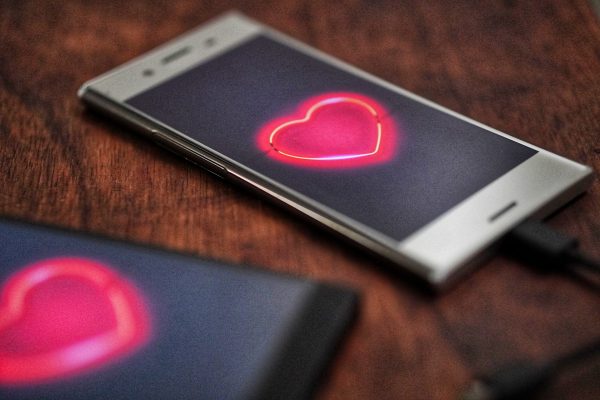
Although Covid-19 has made dating more difficult, people are still finding ways to make connections and initiate more intimate relationships. Like a lot of life right now, people are using the internet to meet and date potential partners. But, unlike zoom birthday parties or virtual weddings, online dating is nothing new. Even before the pandemic, 3 in 10 Americans reported having ever used a dating website or app. Sociological research shows us both the promises of online dating and its potential to entrench existing inequalities.
The internet has expanded the dating pool, potentially displacing “traditional” ways of meeting partners in school or through family connections. This is particularly impactful for people who might have “thin” dating markets where they live and in their community including LGBTQ people and middle-aged heterosexual people. Online dating provides a way for people to seek connection, love, or monogamy with a broader social network, one that is connected to geography and place in both new and familiar ways.
- Courtney Blackwell, Jeremy Birnholtz, and Charles Abbott. 2015. “Seeing and Being Seen: Co-Situation and Impression Formation Using Grindr, a Location-Aware Gay Dating App.” New Media & Society 17(7):1117–36.
- Zack Dwyer,Nicholas Hookway, and Brady Robards. 2020. “Navigating ‘thin’ Dating Markets: Mid-Life Repartnering in the Era of Dating Apps and Websites.” Journal of Sociology.
- Gina Potarca, Melinda Mills, and Wiebke Neberich. 2015. “Relationship Preferences Among Gay and Lesbian Online Daters: Individual and Contextual Influences.” Journal of Marriage and Family 77(2):523–41.
- Michael J. Rosenfeld, and Reuben J. Thomas. 2012. “Searching for a Mate: The Rise of the Internet as a Social Intermediary.” American Sociological Review 77(4):523–47.
The “online” in online dating introduces concerns about authenticity that are not necessarily present in face-to-face interactions. Users worry that their online dates are not who they say they are, and carefully analyze date’s online profiles to try to determine “the truth.” Individuals with stigmatized identities, such as disabled people, worry about how to “disclose” this identity in cyberspace, a concern that is not necessarily present in the embodied offline world.
- Stefanie Duguay. 2017. “Dressing up Tinderella: Interrogating Authenticity Claims on the Mobile Dating App Tinder.” Information, Communication & Society 20(3):351–67.
- Natasha Saltes. 2013. “Disability, Identity and Disclosure in the Online Dating Environment.” Disability & Society 28(1):96–109.
Although it is tempting to view online dating as transformative, it can also entrench existing inequalities. “Assortive mating” in which people seek partners similar to them in terms of race, educational experience, and class happens online, too. For instance, users set their preferences and search profiles in ways that reinforce racial segregation and hierarchy. The inequalities of the “real world” are also present online, with the added barrier that only those who can access computers and the internet can participate.
- Brandon Andrew Robinson. 2015. “Personal Preference’ as the New Racism: Gay Desire and Racial Cleansing in Cyberspace.” Sociology of Race and Ethnicity 1(2):317–30.
- Belinda Robnett and Cynthia Feliciano. 2011. “Patterns of Racial-Ethnic Exclusion by Internet Daters.” Social Forces 89(3):807–28.
- Jessica M. Sautter, Rebecca M. Tippett, and S. Philip Morgan. 2010. “The Social Demography of Internet Dating in the United States.” Social Science Quarterly 91(2):554–75.
- Jan Skopek, Florian Schulz, and Hans-Peter Blossfeld. 2011. “Who Contacts Whom? Educational Homophily in Online Mate Selection.” European Sociological Review 27(2):180–95.

Comments